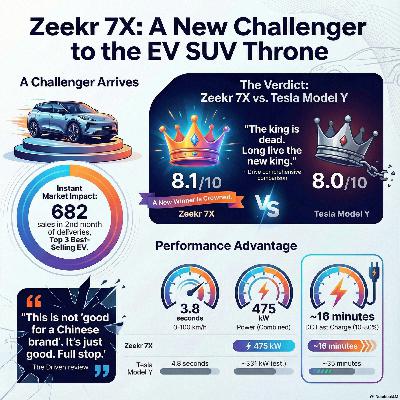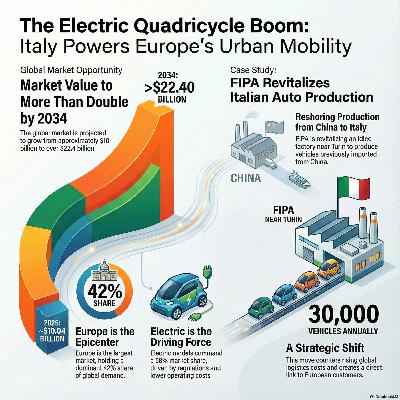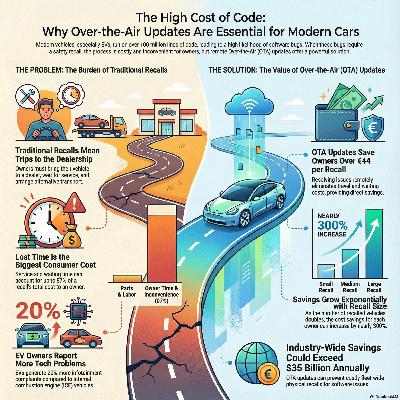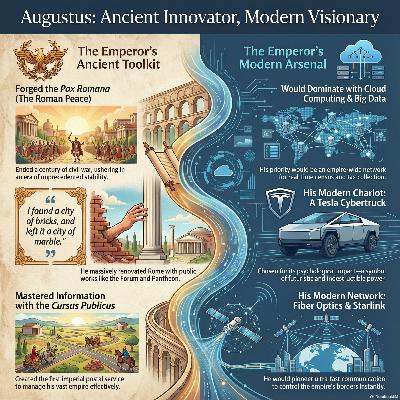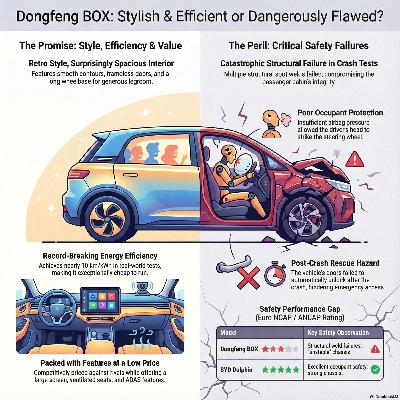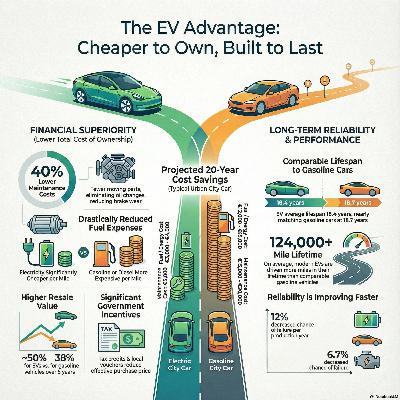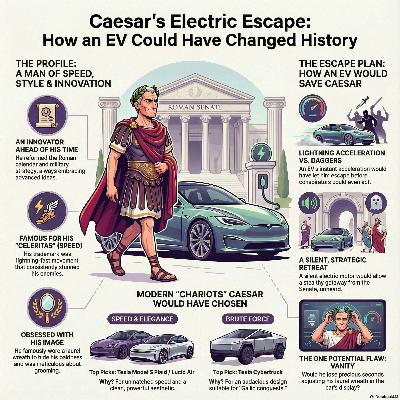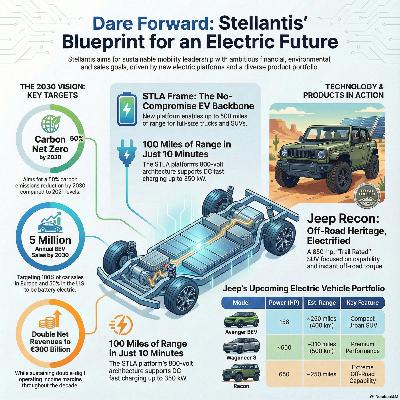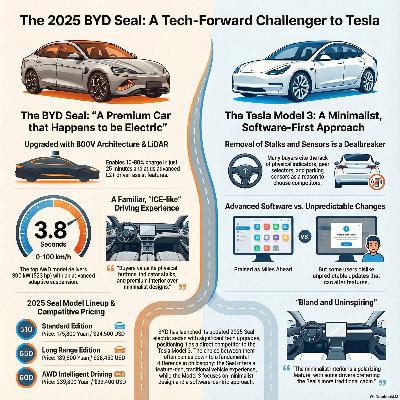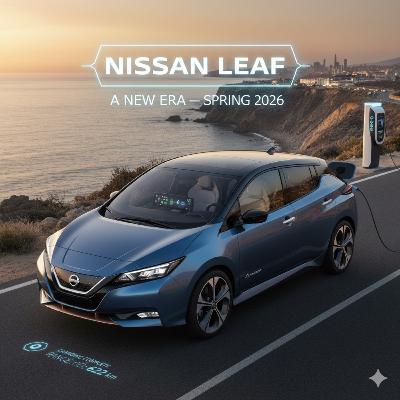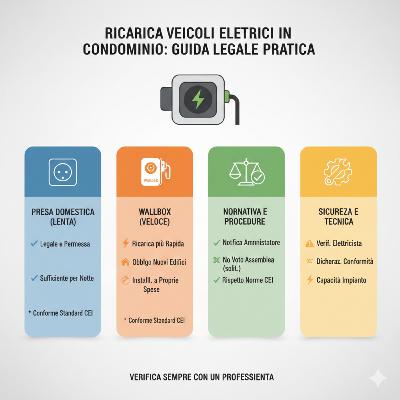Discover eMotors: Electric Revolution
eMotors: Electric Revolution

eMotors: Electric Revolution
Author: eMotors Electric Revolution
Subscribed: 1Played: 55Subscribe
Share
© eMotors Electric Revolution
Description
Innovation, Technology, and Tomorrow's Driving
Welcome to the podcast that explores the electric mobility revolution. Each episode takes you on a journey to discover the latest innovations, cutting-edge technologies, and driving experiences that are shaping the future of automobiles. An electrifying journey into the future of sustainable mobility. If you enjoy these episodes or find them useful, you can buy me a coffee through this link: https://buymeacoffee.com/emotorselectricrevolution.
Welcome to the podcast that explores the electric mobility revolution. Each episode takes you on a journey to discover the latest innovations, cutting-edge technologies, and driving experiences that are shaping the future of automobiles. An electrifying journey into the future of sustainable mobility. If you enjoy these episodes or find them useful, you can buy me a coffee through this link: https://buymeacoffee.com/emotorselectricrevolution.
587 Episodes
Reverse
The Chinese automaker Dongfeng has officially decided to postpone the mass production of its solid-state battery technology until 2027. Although the company previously aimed for a 2026 launch, leadership shifted to a more cautious timeline to refine industrialization processes and manage manufacturing costs. These advanced power cells have already demonstrated impressive reliability during stress tests, maintaining significant capacity in freezing temperatures and remaining stable under extreme heat. Once implemented, this technology will be integrated into a high-voltage platform designed to support rapid charging and driving ranges exceeding 1,000 kilometers. Currently, the manufacturer is focusing on a hybrid liquid-solid battery as an intermediate step toward achieving a fully solid-state solution. This strategic delay highlights the ongoing technical complexity of transitioning from experimental prototypes to large-scale commercial availability.If you find this podcast useful, you can support it here: https://buymeacoffee.com/emotorselectricrevolution. And don’t forget to follow so you don’t miss the next episodeMerry Christmas
The Zeekr 7X is presented as a highly refined electric SUV that challenges the traditional dominance of established luxury car manufacturers. Despite the brand's youth, the vehicle benefits from the engineering expertise of its parent company, Geely, resulting in a product that feels remarkably mature and sturdy. The reviewer highlights the car's exceptional acceleration and rapid charging capabilities, alongside an interior defined by premium materials rather than cheap substitutes. While some software features like voice control and automated doors remain imperfect, the overall build quality is described as sophisticated and cohesive. Ultimately, the source suggests that this model represents a shift where Chinese EVs are no longer just affordable alternatives but are now formidable competitors in the global luxury market.If you find this podcast useful, you can support it here: https://buymeacoffee.com/emotorselectricrevolution. And don’t forget to follow so you don’t miss the next episode
This source proposes a creative bridge between ancient Roman history and modern automotive technology by reimagining the legendary figure Muzio Scevola. The narrative recounts how the aristocrat earned his fame through a self-sacrificial act of burning his right hand to intimidate an invading king, ultimately symbolizing extreme resilience and Roman virtue. By analyzing his persona as a silent, efficient infiltrator, the author suggests that Scevola would naturally favor electric vehicles for their minimalist design and quiet power. Specifically, the source highlights full self-driving technology and specialized steering systems as the perfect solutions for a historical hero with a physical disability. Ultimately, the episode serves as a conceptual pitch that uses technological innovation to restore the freedom and agency of a legendary warrior in a contemporary context.If you find this podcast useful, you can support it here: https://buymeacoffee.com/emotorselectricrevolution. And don’t forget to follow so you don’t miss the next episode
The newly formed industrial entity FIPA S.p.A. intends to revitalize the Italian automotive sector by repatriating the production of lightweight electric vehicles. Building upon the international expertise of Desner, the company seeks to transition from importing to manufacturing quadricycles and compact urban cars directly within Italy by 2026. This strategic shift is driven by a desire to reduce logistical costs and provide sustainable, maneuverable transport solutions tailored to European city infrastructures. Turin has been identified as a primary hub for this initiative due to its rich industrial heritage and skilled workforce. The project currently involves discussions with government ministries and labor unions, including potential plans to repurpose the Lear plant in Grugliasco. Ultimately, FIPA aims to establish a domestic production platform that prioritizes efficiency and accessibility over the increasing size of modern vehicles.If you find this podcast useful, you can support it here: https://buymeacoffee.com/emotorselectricrevolution. And don’t forget to follow so you don’t miss the next episode
Modern electric vehicles (EVs) face significantly higher rates of infotainment instability compared to traditional combustion cars because their software is deeply integrated with critical driving systems like battery management. While internal combustion engines typically isolate entertainment features from mechanical functions, EVs often use a unified software architecture where a single bug can disrupt everything from climate control to navigation. Vehicles equipped with Over-the-Air (OTA) updates can receive remote fixes, but many entry-level or older models require physical dealership visits for manual repairs via USB or diagnostic ports. These manual interventions lead to extended wait times and higher maintenance costs for owners dealing with persistent system crashes or connectivity issues. Consequently, data suggests that the increased complexity of electric platforms results in nearly ten times more software-related complaints than their gasoline-powered counterparts. Without seamless digital updates, these sophisticated systems remain vulnerable to prolonged glitches that diminish the overall user experience and vehicle reliability.If you find this podcast useful, you can support it here: https://buymeacoffee.com/emotorselectricrevolution. And don’t forget to follow so you don’t miss the next episode
The provided episode chronicles the life of Augustus, the first Roman Emperor, who successfully transitioned Rome from a crumbling republic into a stable, expansive empire. He is credited with establishing the Pax Romana, a long era of peace maintained through sophisticated administrative reforms, vast public works, and the cultivation of the arts. Interestingly, the source draws creative parallels between his ancient governance and modern technology, suggesting his obsession with logistics and information would make him a proponent of fiber optics and electric vehicles. The narrative emphasizes that his power relied on the Cursus Publicus, an imperial postal service that mirrors today’s high-speed communication networks. Furthermore, the source highlights his social legislation and his transformation of Rome's physical landscape from brick to marble. Ultimately, Augustus is portrayed as a master strategist who used both architecture and psychological imagery to solidify his divine status and enduring legacy.If you find this podcast useful, you can support it here: https://buymeacoffee.com/emotorselectricrevolution. And don’t forget to follow so you don’t miss the next episode
The provided source details the launch of the Mahindra XEV 9S, a pioneering seven-seat electric SUV designed specifically for the Indian market. Built on the proprietary INGLO architecture, this vehicle represents a significant shift for India's automotive sector by offering a spacious, high-tech EV at a competitive starting price of approximately $32,900. The SUV features impressive specifications, including a 70-79 kWh battery pack, advanced Level 2+ autonomous driving systems, and a luxurious interior with three digital displays. By focusing on comfort and affordability, Mahindra aims to accelerate the country's lagging electrification efforts and provide a viable alternative to Chinese-made electric cars. Ultimately, the source highlights how this model balances performance and utility to meet the growing aspirations of modern Indian families and travelers.If you find this podcast useful, you can support it here: https://buymeacoffee.com/emotorselectricrevolution. And don’t forget to follow so you don’t miss the next episode
The 2025 Dongfeng Box is a compact electric hatchback that pairs a retro-futuristic design with record efficiency, reaching nearly 10 km/kWh in real-world testing. Priced competitively at around €21,500, it offers a spacious, tech-forward cabin with high-quality finishes. However, safety is a major drawback; it received a 3-star Euro NCAP rating following structural failures, specifically spot-weld breakages and insufficient airbag pressure. It remains an agile urban option that requires better build integrity.If you find this podcast useful, you can support it here: https://buymeacoffee.com/emotorselectricrevolution. And don’t forget to follow so you don’t miss the next episode
This episode evaluates the long-term benefits of using electric city cars versus traditional combustion engines for low-mileage urban driving over a twenty-year period. The author argues that electric vehicles offer superior mechanical reliability because their motors are simpler and require significantly less maintenance than complex internal combustion systems. Financial data suggests that while gas-powered cars accumulate heavy costs through fuel and frequent repairs, electric alternatives provide substantial savings in energy and upkeep. Over two decades, the total cost of ownership remains much lower for electric models, which also retain better residual value. Consequently, the source recommends electric power for city dwellers with home charging access due to its economic efficiency and long-term durability. This comparison highlights a clear transition where battery-powered transport becomes the more sustainable financial choice for short-range commuting.If you find this podcast useful, you can support it here: https://buymeacoffee.com/emotorselectricrevolution. And don’t forget to follow so you don’t miss the next episode
Scopri come la leggendaria celeritas di Giulio Cesare avrebbe riscritto la storia a bordo di un’auto elettrica. Con la ripresa fulminea di una Tesla, Bruto e i congiurati non avrebbero mai raggiunto il "Divo Giulio". Tra innovazione, guida autonoma per scrivere i Commentarii e il rischio di distrarsi allo specchio per la sua nota vanità, ecco il ritratto ironico del dittatore in modalità "Ludicrous"
The Chery iCAR V23 is a compact electric SUV born from a strategic partnership between the automaker Chery and the technology firm Zhimi. Targeted at a younger demographic, the vehicle features a distinctive retro-box design paired with modern off-road capabilities, such as high ground clearance and modular accessory options. Performance is delivered through either an efficient rear-wheel drive motor or a high-traction all-wheel drive system, with batteries provided by CATL offering ranges up to 501 kilometers. Inside, the SUV is centered around a high-resolution 15.4-inch display powered by a Snapdragon 8155 chip, supporting an advanced suite of Level 2+ driver-assistance features. Ultimately, the sources describe a vehicle that blends rugged aesthetic appeal with sophisticated smart-device integration and versatile electric powertrains.If you find this podcast useful, you can support it here: https://buymeacoffee.com/emotorselectricrevolution. And don’t forget to follow so you don’t miss the next episode
For 2025, Jeep is transitioning toward a fully electric lineup by utilizing advanced global platforms that prioritize both sustainability and high-performance engineering. The fleet includes the compact Avenger for urban environments, the versatile Compass featuring significant driving range, and high-end models like the Wagoneer S and the rugged Recon. These new vehicles eliminate traditional mechanical complexities, such as oil-bathed belts, in favor of dual-motor systems and high-capacity batteries. Despite the shift to electric power, the brand maintains its off-road heritage by incorporating specialized terrain management systems and significant water-fording capabilities. This strategic evolution ensures that each model delivers zero-emission efficiency without compromising the brand's signature durability on difficult landscapes. Consequently, the provided episode highlights a future where luxury, technological innovation, and extreme versatility coexist within the electric vehicle market.If you find this podcast useful, you can support it here: https://buymeacoffee.com/emotorselectricrevolution. And don’t forget to follow so you don’t miss the next episode
The provided sources detail the upcoming 2026 XPeng G6 and G9, highlighting their status as industry leaders in ultra-fast charging technology. These refreshed electric SUVs utilize a next-generation 800-volt system capable of reaching speeds up to 525kW, allowing for a 10 to 80 percent charge in just 12 minutes. Beyond rapid power delivery, the vehicles feature significant interior upgrades, including larger infotainment screens, high-performance processors, and premium materials like Napa leather. Performance remains a key focus, with the flagship G9 offering an all-wheel-drive variant that produces over 560 horsepower and advanced AI-driven driver assistance. Ultimately, the articles position XPeng as a formidable Chinese competitor capable of outperforming luxury European brands at a significantly lower price point. Chinese automakers know how to create great carsIf you find this podcast useful, you can support it here: https://buymeacoffee.com/emotorselectricrevolution. And don’t forget to follow so you don’t miss the next episode
The provided source details the BYD Seal 08, an updated electric sedan designed to compete directly with the Tesla Model 3 through significant technological upgrades. Built on an advanced 800V architecture, this vehicle supports ultra-fast charging and offers various power configurations, including a high-performance model capable of reaching 100 km/h in just 3.3 seconds. The interior has been modernized with a rotating 15.6-inch touchscreen and expanded storage space, while the exterior features a roof-mounted lidar system to enhance driver assistance capabilities. These sources emphasize that the car balances premium performance and stability with a competitive price point for the European market. Overall, the documentation highlights how the integration of the e-Platform 3.0 Evo and sophisticated ADAS features positions the Seal 08 as a major contender in the global EV landscape.If you find this podcast useful, you can support it here: https://buymeacoffee.com/emotorselectricrevolution. And don’t forget to follow so you don’t miss the next episode
The provided text explains the transition to the "Gen 3" era of electric vehicles (EVs), primarily driven by the need for Western manufacturers to compete with China's dominance in the EV market. It details how this new generation, expected to gain momentum by 2026, is characterized by two key technological features: dedicated 800-volt platforms for faster charging and superior efficiency, and the adoption of the software-defined vehicle (SDV) concept, which allows for over-the-air updates. The source charts the evolution of modern EVs from the limited "Gen 1" models to the more mature, but still flawed, "Gen 2," noting that the Chinese quickly leveraged the software approach pioneered by Tesla to gain their current advantage. Finally, the episode identifies several Western contenders like BMW, Mercedes, and Polestar, who are introducing Gen 3 models to challenge the highly competitive and cost-effective Chinese offerings.If you find this podcast useful, you can support it here: https://buymeacoffee.com/emotorselectricrevolution. And don’t forget to follow so you don’t miss the next episode
The provided Italian source offers a detailed re-evaluation of Cleopatra VII, moving beyond her typical portrayal as merely a seductress to highlight her true roles as an intellectual, strategist, and innovator of the ancient world. The author emphasizes that Cleopatra was a polyglot diplomat who spoke nine languages, a chemist who ran personal laboratories, and a geopolitical master whose famous romantic relationships were driven by maintaining Egyptian sovereignty against Rome. A secondary, imaginative section of the source speculates on what kind of electric car Cleopatra would choose today, asserting she would favor electric vehicles because they embody innovation and technological power. Ultimately, the episode determines that her ideal choice would be a Rolls-Royce Spectre or a Lucid Air Sapphire, vehicles that combine divine aesthetic, silent luxury, and superior speed, aligning with her passion for marketing and control over her public image.If you find this podcast useful, you can support it here: https://buymeacoffee.com/emotorselectricrevolution. And don’t forget to follow so you don’t miss the next episode
The source, an excerpt from an article about BYD, discusses the company's patented innovations in electric vehicle propulsion, focusing on enhancing motor efficiency. Specifically, the episode explains that BYD has filed four patents with the China National Intellectual Property Administration for a new generation of variable-flux permanent magnet synchronous motors (VF-PMSM). The core problem addressed is that traditional synchronous motors are highly efficient only within a narrow operating range, compromising performance at high speeds. BYD's proposed solution involves dynamically regulating the magnetic flux based on speed—high flux for low-speed torque and reduced flux for high-speed efficiency—thereby expanding the motor's highly efficient operational zone. The article highlights that these patents represent a long-term industrial vision for system architecture improvement, aiming to reduce losses and maximize efficiency across various driving conditions. Ultimately, the episode posits that efficiency competition in EVs is shifting from battery capacity alone to how that stored energy is converted into motion by the motor.If you find this podcast useful, you can support it here: https://buymeacoffee.com/emotorselectricrevolution. And don’t forget to follow so you don’t miss the next episode
The provided episode examines how three major ancient philosophers—Seneca, Marcus Aurelius, and Epicurus—would likely view and embrace the adoption of electric vehicles (EVs). It posits that Seneca would be the most enthusiastic advocate, aligning EV use with his critique of excessive luxury and his principle of "Vivere secondo Natura" (living according to nature) to slow environmental collapse. Conversely, Marcus Aurelius would see the electric car as an act of cosmic duty and communal responsibility, choosing a brand known for sobriety and ethical production. Finally, Epicurus would favor EVs primarily for the sensory peace they provide, allowing for Atarassia (absence of disturbance) due to their silent, vibration-free operation. The source concludes with a summary chart that also includes a brief mention of Aristotle's hypothetical preference, linking each philosopher's core value to a specific modern electric car model.If you find this podcast useful, you can support it here: https://buymeacoffee.com/emotorselectricrevolution. And don’t forget to follow so you don’t miss the next episode
The provided source is an article detailing the launch and characteristics of the third-generation Nissan Leaf, an electric vehicle that established the modern EV market starting in 2010. The source emphasizes that the new Leaf transitions from a hatchback to a compact crossover coupé, built on the CMF-EV platform and featuring a redesigned, more aerodynamic exterior and a modern, high-tech interior. Key aspects discussed include its aerodynamic efficiency, new dual-display infotainment system, spacious cabin, and various technical specifications, such as its two engine-battery options, maximum range (up to 622 km), and quick charging capabilities. The article also mentions the Leaf’s historical significance, high sales figures, and a recent design innovation award, concluding with the car's expected market arrival in the spring of 2026.If you find this podcast useful, you can support it here: https://buymeacoffee.com/emotorselectricrevolution. And don’t forget to follow so you don’t miss the next episode
Le fonti illustrano le normative (come la Legge 134/2012) per la ricarica di veicoli elettrici nel box condominiale, confermando che l'uso della presa domestica è legale, purché l'impianto sia conforme. È cruciale installare un interruttore differenziale dedicato (Tipo A o B, 30 mA, come richiesto dalla norma CEI 64-8/V2) e, in caso di lunga distanza o elevato carico (>3 kW), cavi sezionati maggiorati. Vengono forniti anche consigli di manutenzione, tra cui monitorare regolarmente la pressione dei pneumatici dato il peso maggiore, mantenere lo stato di carica tra il 20-80% per longevità della batteria, e proteggere l'elettronica dal calore eccessivo tramite preconditioning e raffreddamento post-uso



